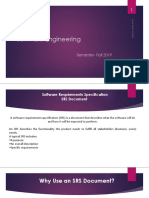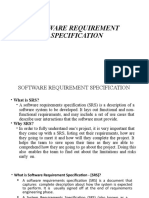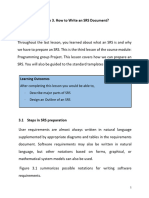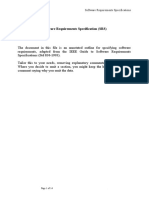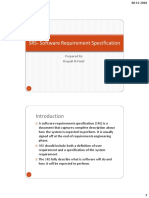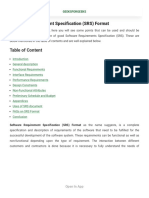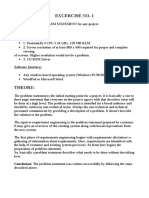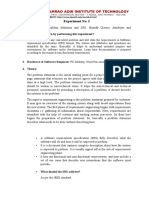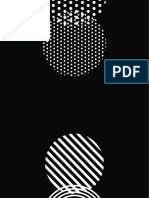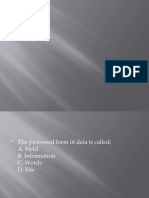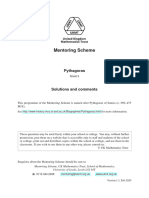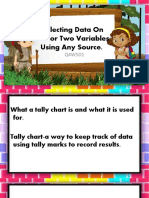0% found this document useful (0 votes)
9 views25 pagesLecture 5 Software Requirement Specification
The document outlines the importance and structure of a Software Requirements Specification (SRS) in software development, emphasizing its role as a roadmap for stakeholders. It details the components of an SRS, including functional and non-functional requirements, and provides guidelines on how to write one effectively. The document also highlights the goals of an SRS, such as improving communication among team members and aiding in project validation.
Uploaded by
hauwauibrahimmagaji532Copyright
© © All Rights Reserved
We take content rights seriously. If you suspect this is your content, claim it here.
Available Formats
Download as PDF, TXT or read online on Scribd
0% found this document useful (0 votes)
9 views25 pagesLecture 5 Software Requirement Specification
The document outlines the importance and structure of a Software Requirements Specification (SRS) in software development, emphasizing its role as a roadmap for stakeholders. It details the components of an SRS, including functional and non-functional requirements, and provides guidelines on how to write one effectively. The document also highlights the goals of an SRS, such as improving communication among team members and aiding in project validation.
Uploaded by
hauwauibrahimmagaji532Copyright
© © All Rights Reserved
We take content rights seriously. If you suspect this is your content, claim it here.
Available Formats
Download as PDF, TXT or read online on Scribd
/ 25
